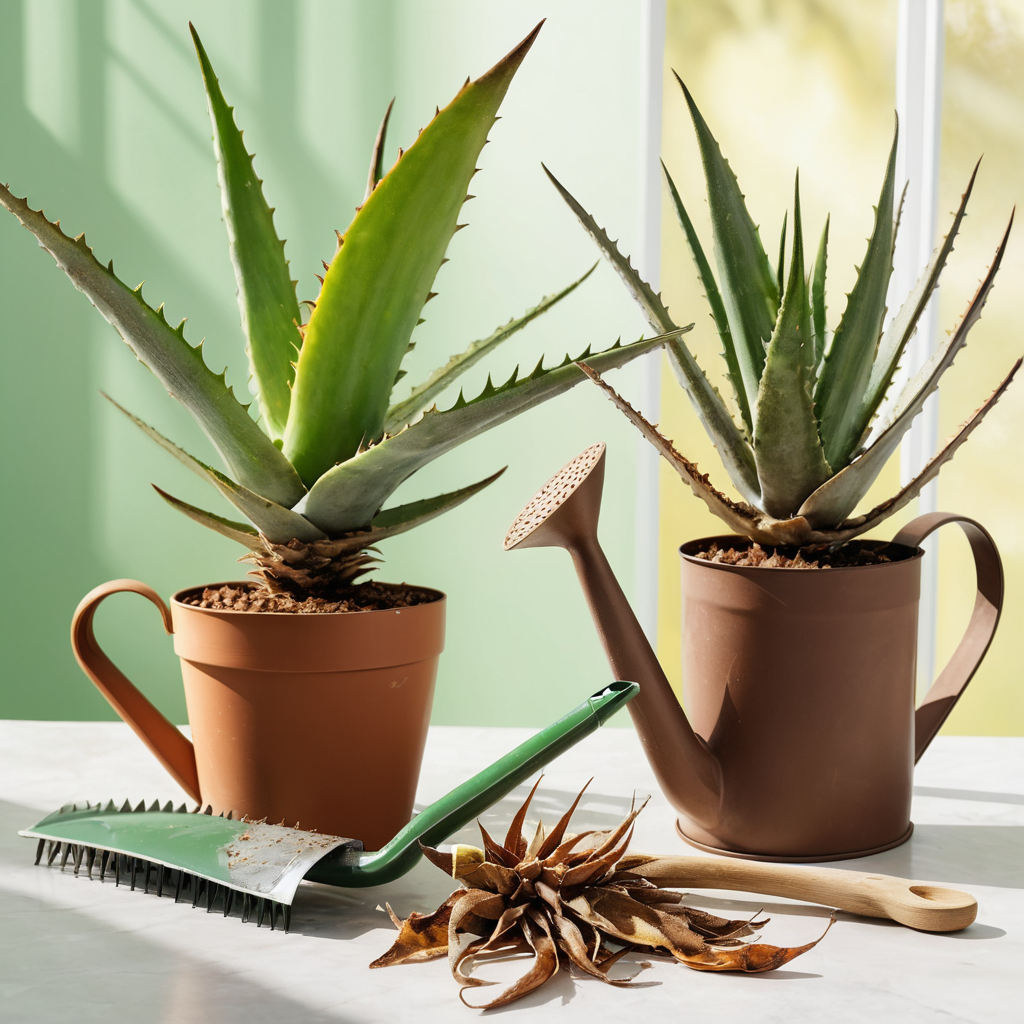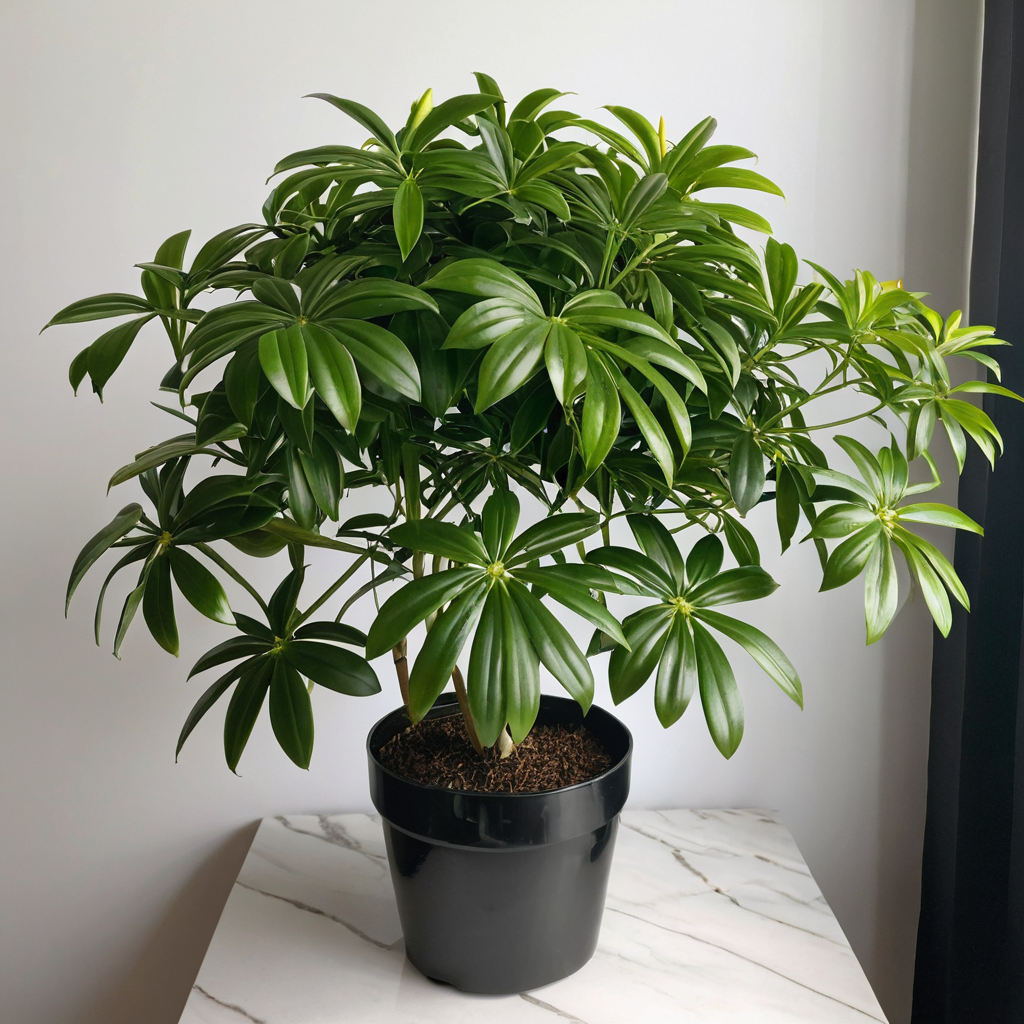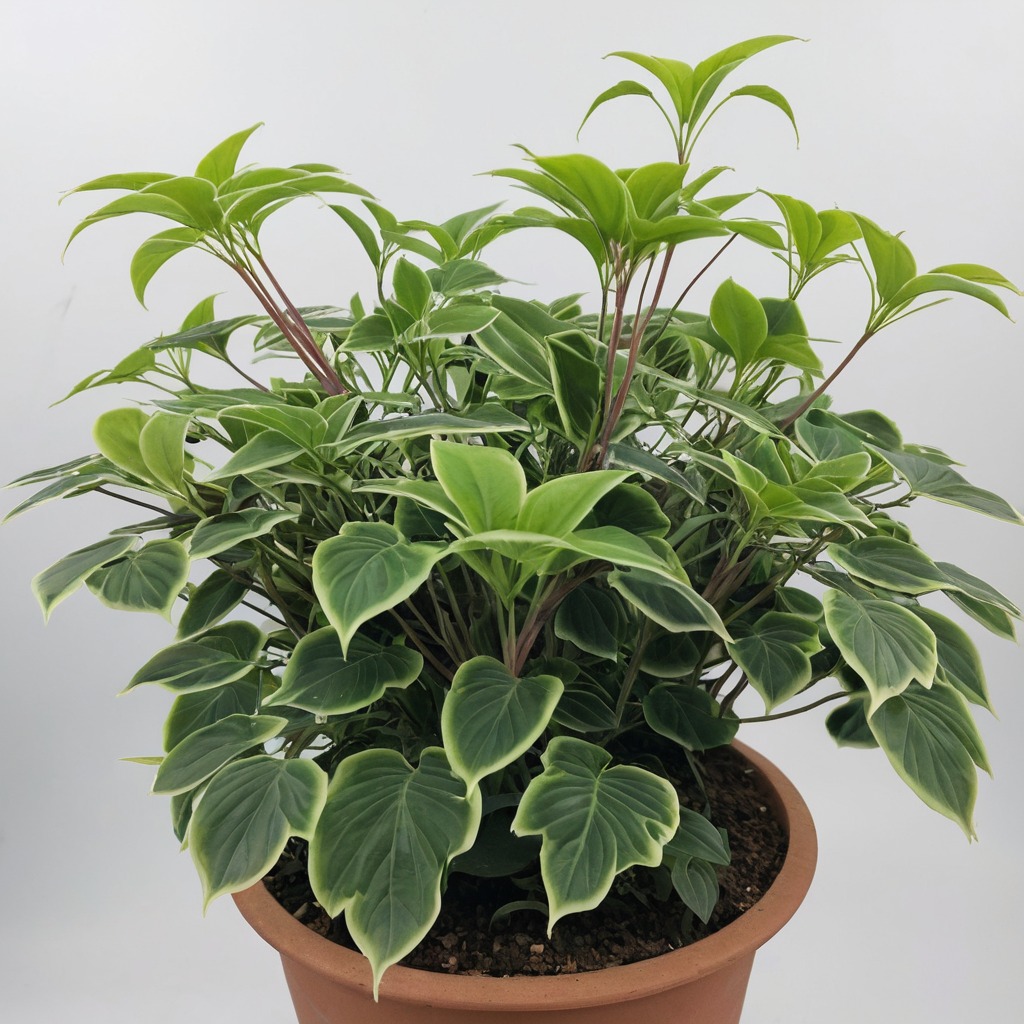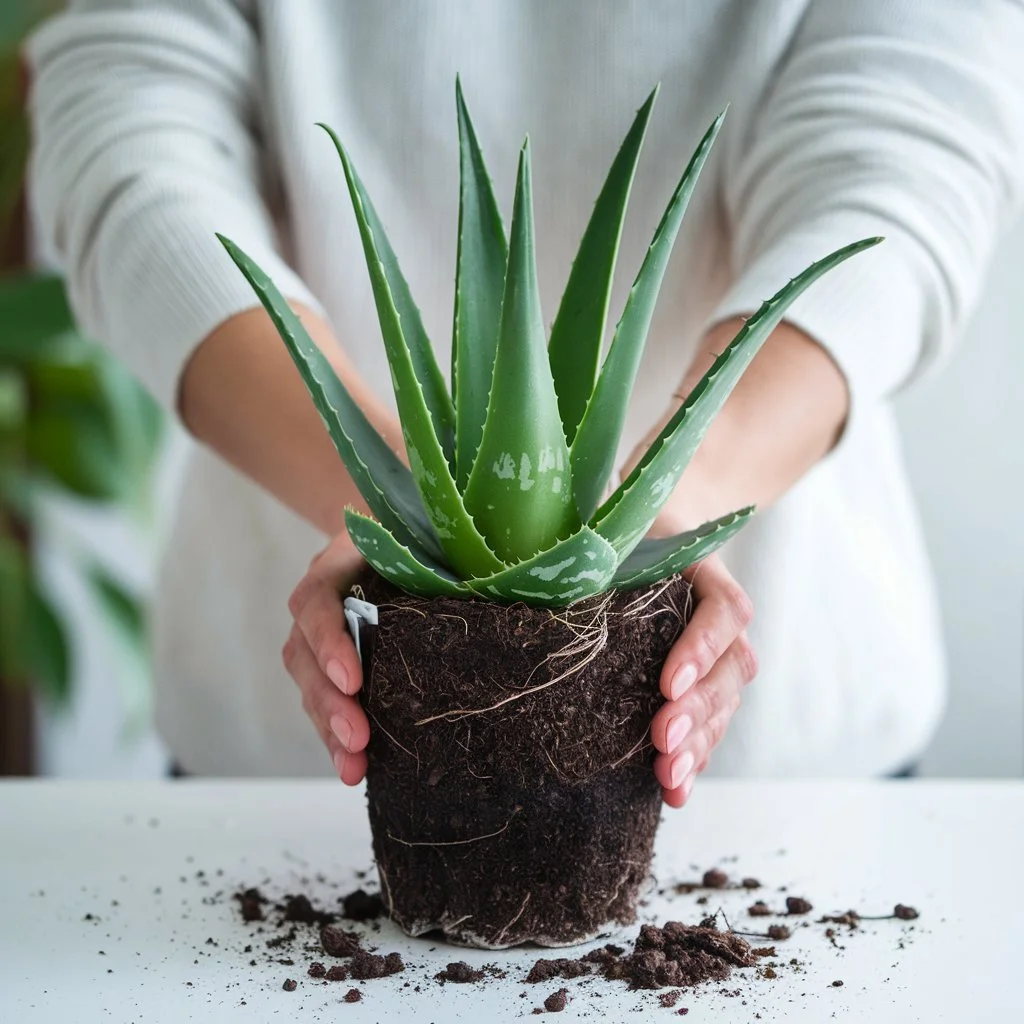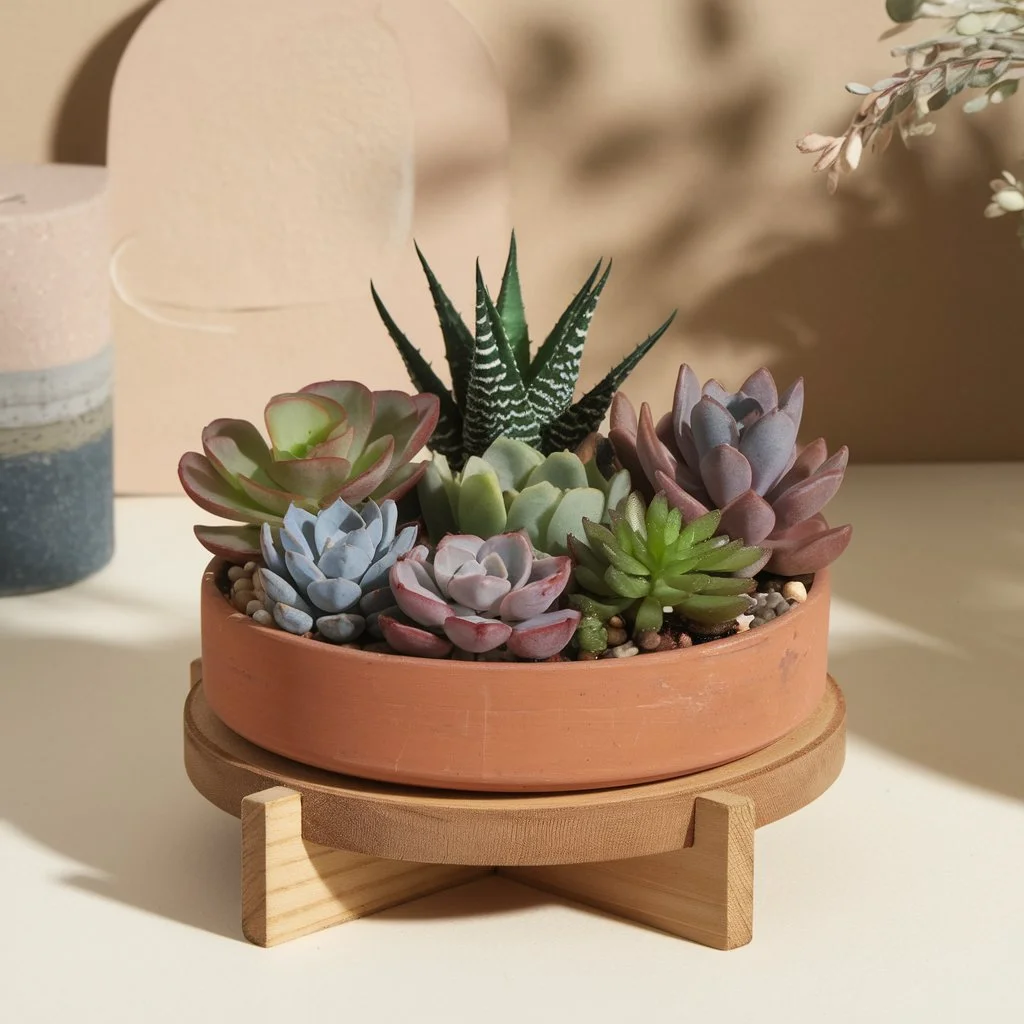Look, there’s your reliable aloe vera— a helpful, green mate, eager to help with burns and beautify your windowsill with its sharp grace. But hold on… why does it look closer to a “miserable cactus” rather than an “amazing succulent”? Before you lose hope and call it quits, we want to reassure you: your aloe pal still stands a fighting chance!
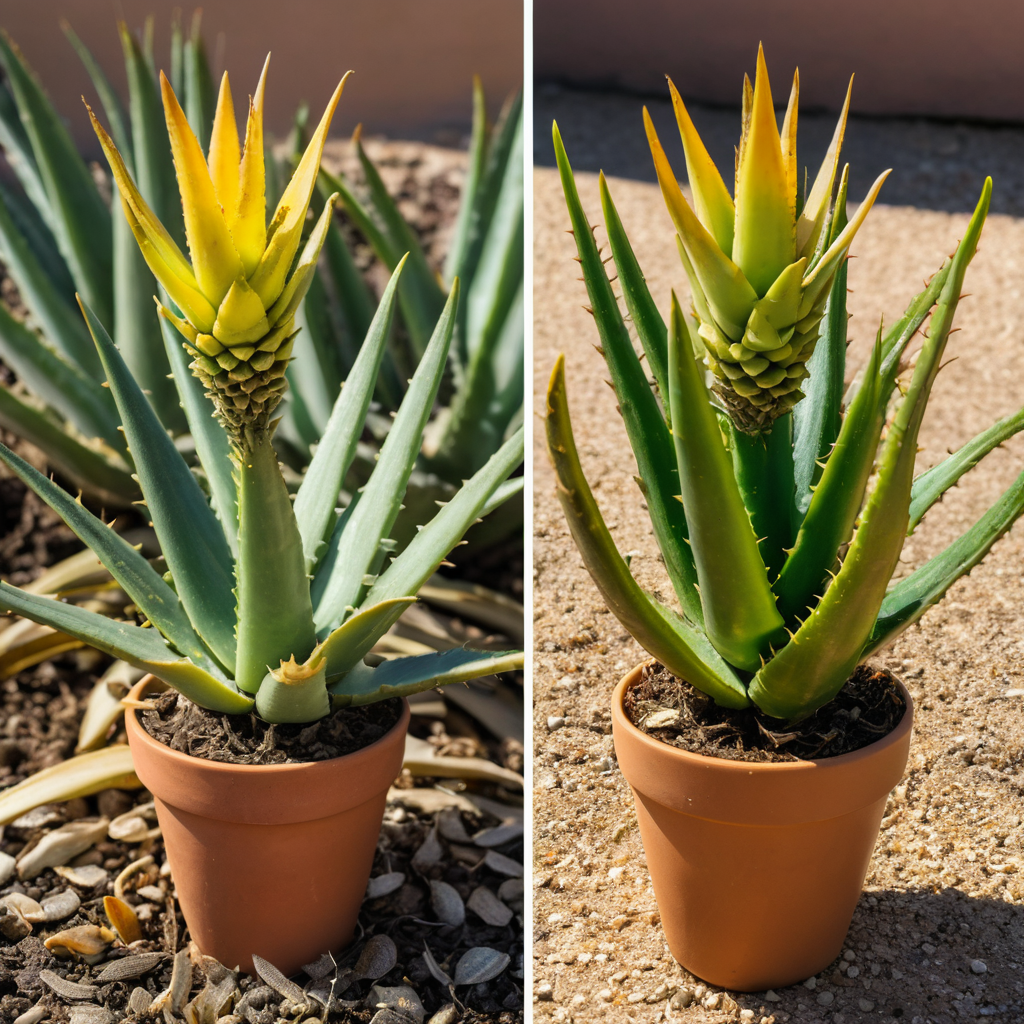
Is your plant wilting, turning brown, or having a full-blown meltdown with dried-up leaves? Let’s uncover the secrets of plant care and get your aloe back on its feet.
From unseen bugs to accidental floods, our guide is simple enough for even the busiest plant parent. Stay tuned, because by the time you finish this article you’ll be a certified aloe healer, and your plant will feel like it’s on an endless beach holiday.
Your aloe is likely struggling due to too much water, root decay, or intense direct sunlight. Bugs, disease, or severe weather conditions might also upset your plant, making it droop and wilt. But don’t worry, proper care—like good watering practices, pest management, and the right surrounding conditions—can restore your aloe and keep it blossoming.
Identifying a Dead or Dying Aloe Vera Plant
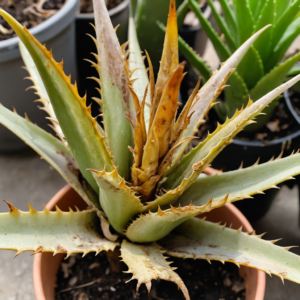 Is your aloe vera plant not looking its best? Hold on! Let’s not grab a shovel just yet. Let’s see whether your aloe is really past saving or just having a hard time. Aloe plants, while tough, aren’t always free from troubles. Let’s determine if it’s beyond help or simply feeling a bit sickly.
Is your aloe vera plant not looking its best? Hold on! Let’s not grab a shovel just yet. Let’s see whether your aloe is really past saving or just having a hard time. Aloe plants, while tough, aren’t always free from troubles. Let’s determine if it’s beyond help or simply feeling a bit sickly.
Signs that Your Aloe Plant is Dead
- Black mushy leaves: If your aloe is soft or its leaves are turning black, it might be dying. This usually indicates severe root rot from overwatering.
- Weak, limp leaves: Aloe vera leaves should be firm and resilient. If they’re limp or don’t bounce back, it could mean serious damage. A healthy aloe should feel strong, not soft or floppy.
- Bad odor: If the soil or plant gives off a sour or rotten smell, your aloe might be in trouble. This could be a sign of root rot, where waterlogged roots start to decay and it is hard to reverse.
How to Differentiate Between a Dying and Struggling Aloe
- Struggling aloe? Don’t fret. It’s not doomed. Spot any of these signs?
Yellow-tinted or brown leaves: This shows too much water. Don’t panic! It’s not a death sentence. Water less, avert more damage. - Crinkled, dry foliage: Got parched, curled leaves? Your aloe could be thirsty. Aloes combat drought; they still need a drink though. Don’t let them dry up. Change your watering habits.
- Droopy or leaning: If it’s slumping or reaching for light, adjust its location. Aloe needs bright yet indirect sunlight. Find a sunny spot and water appropriately. It’ll stand proud soon. Noticed any of these? It’s not a lost cause! Some love and care can reverse these issues. Be patient; your aloe can bloom again!
Top 5 Causes of Aloe Vera Plant Decline
Aloe vera plants generally ask for little care, yet even resilient succulents can struggle. Your aloe might appear down due to a few usual problems. Let’s tackle the top five reasons causing trouble for your aloe vera and learn how to pamper it properly.
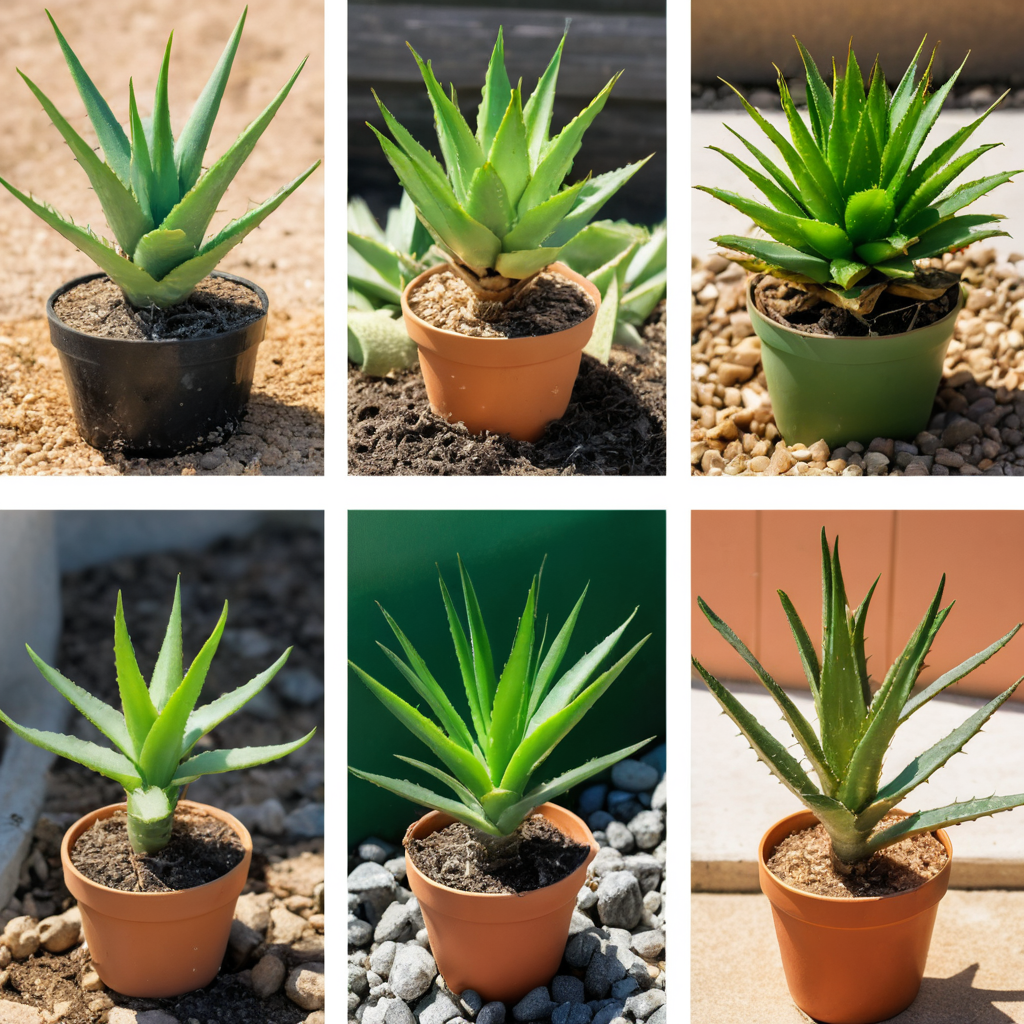
Overwatering and Underwatering
Aloe vera is a unique type of plant. It’s a succulent, craving water but not in excess. Overwatering? Major issue. Not watering enough? That’s trouble too! Here’s the interesting bit: aloe can tolerate dry spells, but it vehemently dislikes getting drenched.
- Too much water hampers the roots, leading to leaf decay and soft leaves. Watering excessively? You’ll find the leaves drooping, becoming soft and squishy.
- Not enough water makes aloe parched, causing crinkly, drawn-out leaves to look like they’ve gone through a heavy spa day (and sadly, not the relaxing kind).
Here’s the trick: Give your aloe abundant water, but wait until the soil dries about one or two inches down. An essential aspect of a flourishing aloe is a pot that drains well.
Root Rot
Root rot is like a quiet enemy. It creeps in if you’ve given too much water to your aloe. It’s a problem when the soil is too wet for a long time and the roots start to decay. The signs are a bad odor, squishy leaves, and the plant starting to look sick. It often happens when plants are overwatered, but can also occur if your aloe is in a pot that doesn’t drain well.
You can try to save a sick aloe by softly taking it out of its pot, looking at the roots, and cutting off any dark, soft parts. After that, move your aloe to clean soil that drains well. If the rot is too severe, sadly, you may have to let it go.
Sunburn and Sun Damage
Everyone knows aloe enjoys sunshine, but it can also get too much of it. Aloe vera plants do well in bright but indirect sunlight.
If they get too much direct sun, especially during high noon, they risk getting sunburned. Sunburn can cause discoloration on the aloe’s leaves. The leaves may turn brown, dry up, or even curl on the sides.
Too much sun exposure can lead to crispy and brittle leaves. If your aloe gets too crispy, it might need a shady spot to recuperate.
To prevent this, put the aloe where it can see plenty of sun without harsh rays all day. A couple of hours of direct sun in the morning is ideal!
Pests and Diseases
You’re sailing smoothly, and then pesky bugs crash the party. Aloe vera plants usually fend off pests pretty well, but they have weaknesses.
Common offenders targeting your aloe might be aphids, mealybugs, and scale insects. These nasty characters drain your plant’s vitality, leading to yellow leave or slow growth.
Aloe is also at risk from fungal or bacterial infections. Spots, mold, or weird growing stuff on your aloe’s leaf—it could be a disease. But, on a positive note, you can usually banish pests with a simple squirt of insecticidal soap or neem oil.
If your aloe is under the weather with a disease, cut out the unwell leaves and use a plant-safe fungicide. A clean, well-cared-for plant is the best shield against these irritating issues.
Temperature Stress (Cold or Hot)
Aloe vera enjoys the tropics, shying away from extremes. Chilly or sweltering climates? Not its favorite. The perfect sweet spot for aloe lies between 59°F to 77°F (15°C – 25°C).
- Faced with cold: Aloe doesn’t like the frost; it makes it sick. Frozen leaves might become squishy, or worse, freeze altogether, causing lasting harm.
- Burning up with heat: Now if your aloe basks in overwhelming heat (especially harsh, blazing sunshine), the plant may wilt, dehydrate, or lose leaves to save water.
Ensure your aloe’s comfort; protect it from frostbite or excessive heat. Resident of a chilly zone? Keep your aloe warm and indoors in winters! By being aware of these simple reasons behind your aloe’s distressed state, you can guarantee a happy, healthy plant for a long future.
Always remember, to keep your aloe growing, maintain balance—water but don’t drown, place it in sunny but not scorching space, and shower it with the care it needs.
How to Revive a Dying Aloe Vera Plant
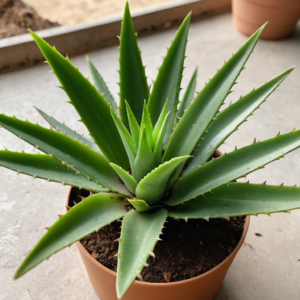 You might be glancing over at your aloe vera, noticing it’s not in the best shape. Is there a chance for it? Hold off on giving up – aloe veras are tough little fighters, and they might bounce back with some TLC. But what about if your aloe seems past the point of no return? Can it actually be revived? Let’s see!
You might be glancing over at your aloe vera, noticing it’s not in the best shape. Is there a chance for it? Hold off on giving up – aloe veras are tough little fighters, and they might bounce back with some TLC. But what about if your aloe seems past the point of no return? Can it actually be revived? Let’s see!
Steps to Follow When You Think Your Aloe Is Beyond Saving
Don’t worry if your aloe plant seems to be on its last legs. By following these easy steps, you may be able to breathe new life into your aloe.
It’s amazing what a bit of love and attention can do! Examine Your Plant Before jumping to conclusions or making rash decisions, examine your aloe. Is the entire plant in trouble, or just certain leaves? Do the roots appear rotten or just thirsty?
This evaluation will help you figure out what your next step should be or if it’s time to let go.
- Remove Dying Leaves Soggy or burnt leaves need to be removed. This allows the aloe to spend its energy on healthier growth and prevents decay from spreading.
- Use clean scissors or shears to cut away dying leaves while leaving healthy ones intact. They’re the key to your plant’s revival! Check for Problems Below Overwatering and poor drainage can damage aloe roots. Exercise caution while removing your plant from the pot and inspecting the roots. If they’re rotten, it’s time to cut away this decay before you repot the aloe, allowing the remaining roots to dry for a day or two.
- Use New Soil with Good Drainage Once you’ve eliminated root rot, prepare for a fresh start. Select a pot slightly larger than the root ball and ensure it has holes for draining excess water. Aloe requires a soil mix that is tailor made for succulents or cactus plants.
- Keep your aloe from damp or packed soil; it won’t help the plant. Water Purposefully Carefully water your aloe after repotting, ensuring the soil doesn’t get too wet. Be mindful of water volume; aloe plants are intolerant of waterlogged roots. Water enough to settle the soil, allow drying periods, and remember that your plant needs time to acclimate.
- Ensure Adequate Lighting Aloes thrive in bright, indirect sunlight but can’t tolerate too much direct sun after a stressful event. Position your plant in a sunny but not too intense area. A naturally lit windowsill works fine; just shield the plant from midday’s harsh sun rays.
Wait and Watch Reviving your aloe won’t happen instantly. New signs of growth may appear after several weeks, so patience is necessary. Closely observe your plant and make necessary adjustments—a touch more water, increased sun exposure, or maybe a new pot if the old one doesn’t suffice.
Can You Bring a Dead Aloe Vera Plant Back to Life?
Let’s get straight to it. If your aloe is gone beyond repair, there’s no resurrecting it. Mushy, blackened leaves and no life signs mean it’s most likely over. But a handful of healthy leaves or roots? That spells hope!
Aloe vera plants are resilient and can bounce back, even from a seemingly “dead” state. Even after all the right actions, if the plant is lifeless, it may be time to let go. Don’t fret. This misadventure will make you a stronger plant caretaker for next time! Plus, your future aloe vera may flourish, making the previous one proud.
Solutions for Common Aloe Vera Problems
Aloe vera plants are usually calm, yet even the simplest indoor plants may meet some challenges. If your aloe begins to wilt, shrivel, or show odd symptoms, don’t fret—there’s always a solution. Be it a water issue, a sunburn, or an unpleasant visitor, we’ll explore some common aloe vera problems. We’ll also explain solutions to help your plant return to the healthy, joyful succulent you admire.
Fixing Overwatering and Underwatering
Aloe vera plants are pretty picky when it comes to water. While they can survive a drought, they’ll absolutely revolt against overwatering. The secret to aloe’s happiness is striking a balance: give it a good drink when the soil is dry, but don’t drown it.
- Overwatering: If your aloe’s leaves are turning soft, squishy, or turning yellow, it could be drowning in too much water. First, check the soil. If it’s soggy, stop watering immediately. Let the soil dry out completely before giving it another drink, and make sure your pot has proper drainage to prevent water from sitting at the bottom. You might also need to trim off any mushy, affected leaves to keep the plant healthy.
- Underwatering: On the flip side, if your aloe’s leaves are wrinkled, shriveled, or drooping, it might be thirsty. Aloe vera loves to dry out between waterings, but it still needs a regular drink. Give it a good soak, but make sure the water drains through the bottom of the pot, and let the soil dry out before watering again.
The key here is to check the soil before watering and adjust accordingly. Aloe plants thrive on a “drought and flood” cycle, not constant moisture.
Repotting Aloe Vera to Address Root Rot
If you’ve been giving your aloe a little too much love (or maybe not enough love when it comes to drainage), root rot can sneak up on you. It happens when the roots are constantly sitting in water, causing them to decay and making your aloe look sadder by the day.
- How to fix it: Gently remove your aloe from its pot and inspect the roots. If they’re brown or mushy, they’re rotting and need to be trimmed away. Once you’ve cleared out the bad parts, let the healthy roots dry out for a day or two before repotting. Make sure to choose a new pot with good drainage and a fresh batch of well-draining cactus or succulent soil.
- Prevention: For the future, always make sure your pot has drainage holes, and don’t water until the soil is completely dry. Aloe roots are sensitive, and standing water will lead to rot before you can say “succulent.”
Healing Sunburnt Aloe Vera Plants
Aloe vera loves sunlight, but like that friend who can’t handle a sunny day without SPF, it can get sunburned too! If your aloe’s leaves are starting to turn brown, crispy, or look a little crispy around the edges, it’s likely suffering from too much direct sun exposure.
- How to fix it: First, move your aloe to a spot with bright, indirect sunlight. While aloe loves light, it can’t handle the full force of midday sun, which can cause it to burn. Give it a little break by placing it somewhere it gets plenty of light but without the harsh direct rays.
- Prevention: In the future, try to avoid sudden shifts between extreme sunlight and shade. If you’re transitioning your aloe from a low-light environment to full sun, do it gradually to give it time to adjust.
Your aloe will be thanking you once it can bask in sunlight without the risk of turning into a crisp!
Dealing with Aloe Vera Pests and Diseases
Though aloe vera is pretty pest-resistant, it’s not completely immune to the occasional intruder. Aphids, mealybugs, and scale insects are the usual suspects when aloe plants start looking unwell. These little critters can suck the sap out of your aloe, leaving it weak, yellowed, and stunted.
- How to fix it: If you spot pests, get rid of them quickly. For a mild infestation, you can wipe the leaves with a damp cloth or spray them with a mixture of water and mild soap. For a more severe problem, try using insecticidal soap or neem oil to wipe out the pests. Make sure to follow the instructions on the product to avoid harming your aloe.
- Diseases: Fungal and bacterial infections can also sneak in and cause spots, mold, or wilting. If your aloe is infected, remove any affected leaves, and treat the plant with a fungicide or bactericide. Always keep your aloe clean and avoid watering it from above to prevent water sitting on the leaves.
The good news? With a little treatment, your aloe can bounce back and be pest-free in no time.
Protecting Aloe Vera from Temperature Stress
Aloe vera plants are tropical, and they love warm temperatures. But, like a lot of us, they don’t appreciate being too hot or too cold. When the temperature swings too far outside their comfort zone, they can experience stress, which can manifest in wilting, browning, or leaf drop.
- Cold stress: Aloe can’t handle frost or freezing temperatures. If it’s exposed to chilly drafts or placed in an area that dips below 50°F (10°C), your aloe might start to show signs of distress. Keep your aloe in a room with stable temperatures, and move it indoors if you live in a cold climate.
- Heat stress: On the other hand, too much heat or direct sunlight can cause your aloe to overheat. If your aloe’s leaves are shriveling or turning brown, it could be time to move it to a shadier spot or cool it off with some light afternoon shade.
By maintaining a comfortable temperature range—ideally between 59°F and 77°F (15°C to 25°C)—you’ll help your aloe thrive without stressing it out.
With a little know-how and a few simple steps, you can tackle most of the common aloe vera problems that come your way. Your aloe will thank you with lush, healthy leaves that are just begging to be admired!
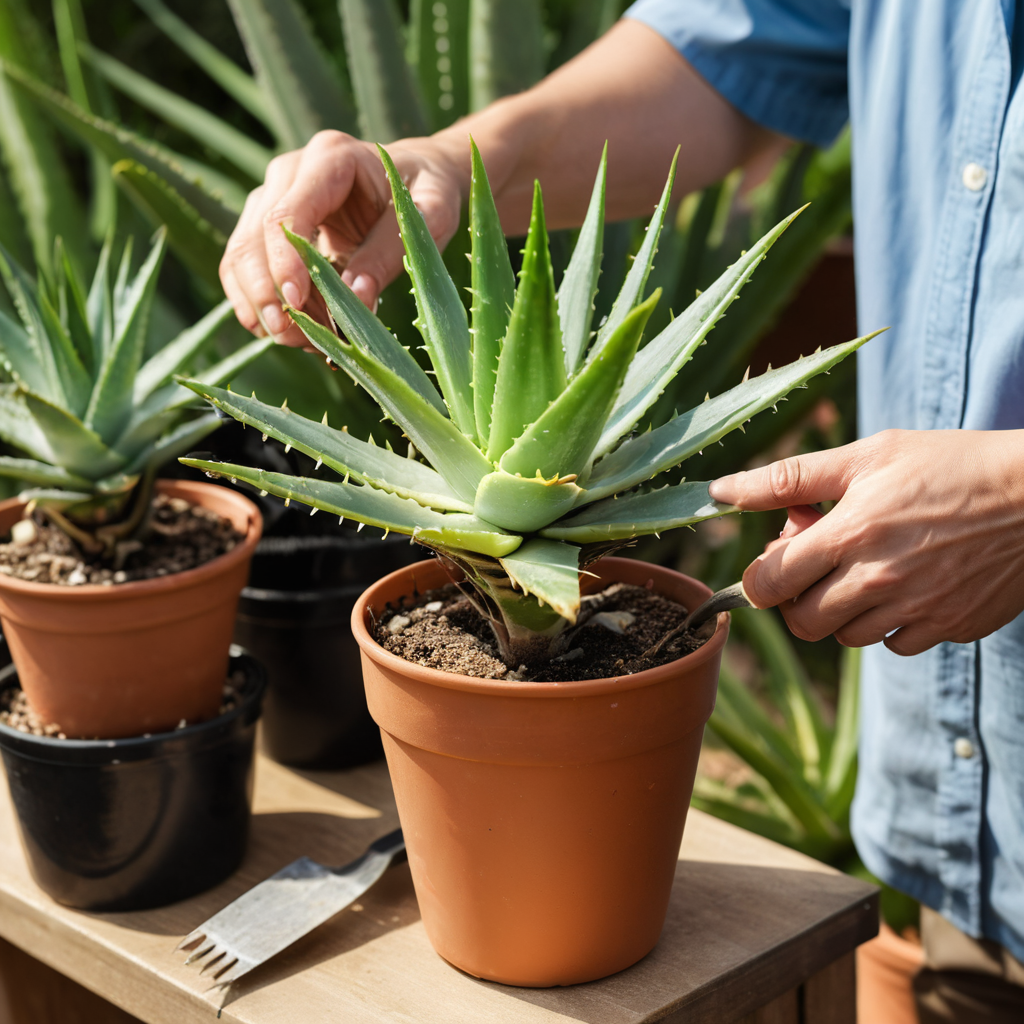
Fixing Overwatering and Underwatering
Watering your aloe vera plant properly is key to keeping it healthy and thriving. Aloe vera is a succulent, meaning it doesn’t need a lot of water to survive—too much, and you risk a dead aloe vera plant. Too little, and your aloe will start to dry out, leaving you with a shriveled mess. Here’s how to master the art of watering your aloe and avoid turning it into a dead aloe vera.
How to Water Aloe Vera Correctly
When it comes to watering aloe vera, it’s all about timing and the amount of water. Aloe plants prefer their soil to dry out completely between waterings. Here’s what you need to do:
- Water deeply, but infrequently: When you water your aloe, give it a deep drink, but make sure the soil drains well. Allow the water to soak through the bottom of the pot. This ensures that the roots get hydrated without sitting in water for too long.
- Let the soil dry out: Between waterings, let the soil dry out at least an inch or two down. This is important because aloe vera roots are prone to rot if they stay wet for too long.
- Avoid watering the leaves: Aloe vera is sensitive to moisture on its leaves. Wet leaves can invite rot or fungal diseases, which can lead to a dead aloe vera plant.
The Signs of Overwatering and Underwatering
You don’t have to be an expert gardener to spot the signs of overwatering or underwatering your aloe vera. Here’s how to tell if you’ve gone too far in either direction:
- Signs of Overwatering:
- Soft, mushy leaves: If your aloe’s leaves have turned soft or squishy, especially near the base, this is a classic sign of overwatering. The plant is likely suffering from root rot, which can lead to a dead aloe vera if not addressed.
- Yellowing or browning leaves: If the lower leaves of your aloe start to yellow, this could indicate excess water or poor drainage.
- A foul smell: If your aloe is giving off a sour or rotten smell, it’s probably due to rotting roots caused by overwatering. This will require repotting to save your aloe.
- Signs of Underwatering:
- Wrinkled or shriveled leaves: A large aloe vera plant can show signs of dehydration through wrinkling or curling of its leaves. The leaves lose moisture and start to shrivel up when the plant isn’t getting enough water.
- Dry, crispy tips: If the tips of the leaves start to turn brown and crispy, your aloe is probably thirsty. This is a clear sign that your aloe needs more water.
- Growth stunting: A dehydrated aloe vera won’t grow as quickly, and the leaves may not be as thick or firm as they should be.
If you’re noticing any of these signs, it’s time to reassess your watering routine to prevent your aloe from becoming a dead aloe vera plant.
How to Replant Aloe Vera
If overwatering has caused root rot, you might need to repot your aloe in fresh soil to save it from becoming a dead aloe vera plant. Here’s how to replant aloe vera:
- Remove the aloe from its pot and check the roots. Trim away any mushy, dark, or rotting sections, leaving the healthy roots behind.
- Let the aloe dry out for a day or two. This helps prevent further rot.
- Repot in well-draining soil. Aloe vera needs soil that doesn’t retain too much moisture, so use a cactus or succulent mix. Ensure your new pot has drainage holes.
- Water sparingly after replanting—just enough to settle the soil, and then wait for the top inch of the soil to dry before watering again.
By following these tips, you can save your aloe from becoming a dead aloe vera plant and keep it thriving for years to come!
Protecting Aloe Vera from Extreme Temperatures
Aloe vera is a tropical plant, which means it loves warmth, but it also has its limits. Exposing your aloe to extreme temperatures—whether it’s too hot or too cold—can cause serious damage, potentially leading to a dead aloe vera plant. Let’s take a look at aloe vera’s temperature requirements and how to protect it from the harsh effects of frost and heat stress.
Aloe Vera Temperature Requirements
Aloe vera thrives in temperatures between 59°F to 77°F (15°C to 25°C), which is the perfect range for healthy growth. Anything significantly lower than 50°F (10°C) can send your aloe into shock, especially if it’s exposed to freezing conditions. On the flip side, temperatures above 90°F (32°C) for extended periods can cause stress and damage to your aloe.
If you’re growing a large aloe vera plant, be mindful of these temperature extremes, as larger plants can be more susceptible to temperature changes due to their size and mass.
How to Protect Aloe from Frost and Heat Stress
Whether you’re dealing with the chill of winter or the heat of summer, there are simple steps you can take to ensure your aloe stays comfortable and avoids becoming a dead aloe vera plant.
- Protecting Aloe Vera from Frost:
Aloe vera is sensitive to frost, and cold temperatures below 50°F (10°C) can be fatal, leading to a dead aloe vera plant if left exposed. If you live in an area that experiences frost, make sure to move your aloe indoors during the colder months.
- Outdoor Aloe Care: If you have a large aloe vera plant outside, try bringing it inside when temperatures drop, or place it in a sheltered spot, like a porch or a greenhouse, to protect it from the cold.
- Frost Protection for Small Plants: For smaller aloe vera plants, consider wrapping them in burlap or using a frost cloth to shield them from freezing temperatures overnight.
- Protecting Aloe Vera from Heat Stress:
Aloe vera loves sunlight, but too much direct heat, especially during the hottest part of the day, can lead to sunburn and dehydration. If your aloe is sitting in intense afternoon sun, it could begin to show signs of heat stress such as crispy, brown leaves, which can eventually lead to a dead aloe vera plant.
- Provide Shade: If you’re growing aloe in a hot climate, try to place your aloe in an area with some afternoon shade. A large aloe vera plant will benefit from a location that has filtered sunlight during the peak heat hours.
- Use Mulch: In hotter temperatures, using a layer of mulch around your aloe can help keep the roots cool and prevent overheating. Just be careful not to cover the plant’s crown, as it needs air circulation to stay healthy.
- Temperature Control Indoors:
When growing aloe indoors, make sure your plant isn’t sitting directly next to a heat source like a radiator or air conditioner. Drafts or fluctuating temperatures can stress your aloe, causing it to suffer. Keep your aloe near a window with plenty of natural light, but away from drafts or extreme heat sources.
How to Replant Aloe Vera if Temperature Damage Occurs
If your aloe has suffered from temperature stress, whether from frost or heat, it might need to be repotted in fresh soil to recover. Here’s how to replant aloe vera if temperature damage has taken its toll:
- Inspect the Plant: Check the leaves for signs of damage. Trim off any dead or severely damaged leaves, but leave the healthy, green leaves to help the plant regenerate.
- Check the Roots: If the plant’s roots have been affected by cold or heat stress, carefully remove the aloe from its pot and examine the roots. If they look healthy, leave them intact; if they’re damaged, trim away the affected areas.
- Repot in a New Pot: After trimming away damaged parts, repot your aloe in fresh, well-draining soil. Aloe thrives in a cactus or succulent mix, and a pot with drainage holes is essential to prevent water from sitting around the roots.
- Let It Rest: After replanting, give your aloe some time to recover. Avoid overwatering in the beginning and allow the soil to dry out before watering again.
By understanding aloe vera’s temperature needs and taking steps to protect it from extreme heat and cold, you can ensure your plant stays healthy and avoids becoming a dead aloe vera plant!
Best Growing Conditions for a Healthy Aloe Vera Plant
Aloe vera is one of those plants that makes you feel like a gardening pro, even if you’re just starting out. It’s easy to care for when you provide the right conditions, and with a few simple adjustments, you can enjoy a thriving aloe vera plant for years. Let’s dive into the best growing conditions for a healthy aloe vera plant, covering everything from light to soil and potting tips.
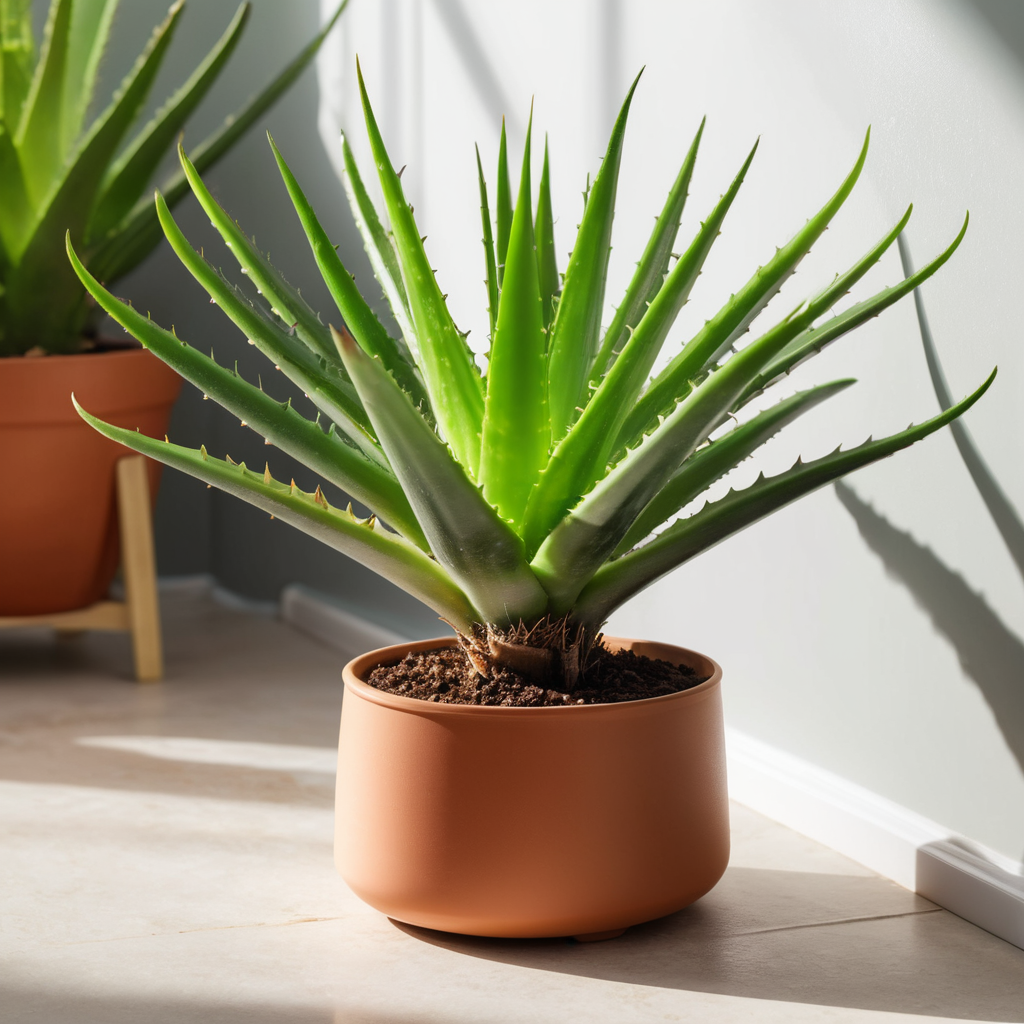
Ideal Light, Temperature, and Soil for Aloe Vera
Aloe vera is a sun-lover, so providing it with the right amount of light is essential for its health. But it’s not just about sun exposure—temperature and soil play a huge role in keeping your aloe happy and thriving.
- Light:
Aloe vera thrives in bright, indirect sunlight. If you place your aloe near a sunny window, it’ll thank you with lush, vibrant leaves. However, too much direct sunlight, especially during the hottest part of the day, can lead to sunburn and a dead aloe vera plant. If you have a large aloe vera plant, it might need more space and light, but be mindful of not overexposing it to direct rays.
- For the best results: Aim for 4-6 hours of indirect sunlight daily. If you live in a particularly sunny or hot area, consider placing your aloe in an east- or west-facing window to avoid midday sunburn.
- Temperature:
Aloe vera prefers temperatures between 59°F to 77°F (15°C to 25°C). Anything colder than 50°F (10°C) can cause your aloe to freeze, leading to a dead aloe vera plant, while temperatures above 90°F (32°C) can stress the plant and cause it to overheat. If you live in a climate with extreme temperatures, move your aloe indoors to keep it in a temperature range that suits it.
- For the best results: Keep your aloe vera plant in a consistent, moderate temperature, ideally away from cold drafts or direct heat sources like radiators or air conditioners.
- Soil:
Aloe vera needs well-draining soil to thrive. Cactus or succulent soil is ideal, as it allows water to drain quickly, preventing root rot and keeping your aloe’s roots healthy. Aloe vera is particularly sensitive to excess moisture, which is why choosing the right soil is a key factor in its survival. If you’re planting aloe vera seeds, make sure the soil is loose and airy to promote good root development.
- For the best results: Opt for sandy or loamy soil with excellent drainage properties. A potting mix designed for cacti and succulents will provide the perfect environment for your aloe to grow.
Container and Potting Tips for Success
Choosing the right container and repotting your aloe vera at the right time can make a world of difference in how your plant grows. Aloe vera roots like space to spread out, so picking the right pot is essential for success.
- Pot Size:
When it comes to pot size, don’t go too big. Aloe vera does best when it’s snug in its container, so pick a pot that’s just slightly larger than the root ball. A large aloe vera plant, for example, might need a larger pot to accommodate its roots, but avoid going overboard—too much extra space can cause the soil to stay moist for too long, leading to root rot and eventually a dead aloe vera plant.
- Drainage Holes:
One of the most important factors for a healthy aloe is a pot with drainage holes. Aloe vera is sensitive to standing water, and without proper drainage, the roots can rot, leading to a dead aloe vera plant. Always ensure that your pot has at least one drainage hole at the bottom to allow excess water to escape.
- How to Replant Aloe Vera:
Aloe vera does need repotting every 1-2 years or when it outgrows its current pot. When repotting, carefully remove the plant from its old pot and check the roots for any signs of rot. Trim away any unhealthy parts and place the aloe in a fresh, well-draining pot with new cactus or succulent soil.
- For the best results: After repotting, give your aloe a few days to settle into its new home without watering. Then, begin watering sparingly and allow the soil to dry completely before the next watering.
By providing the right light, temperature, soil, and potting conditions, your aloe vera will thrive and avoid becoming a dead aloe vera plant. With a little attention, you’ll have a healthy, thriving aloe that can grow into a large aloe vera plant, ready to impress your friends and keep your home looking vibrant.
-photo-
Preventing Aloe Vera Plant Issues in the Future
You’ve invested time and effort into caring for your aloe vera, so let’s keep it that way! Preventing problems before they start is the best way to avoid turning your healthy aloe into a dead aloe vera plant. With regular care practices and a few smart habits, you can ensure your aloe stays happy, healthy, and thriving for years to come. Here’s how to keep your aloe vera plant in tip-top shape.
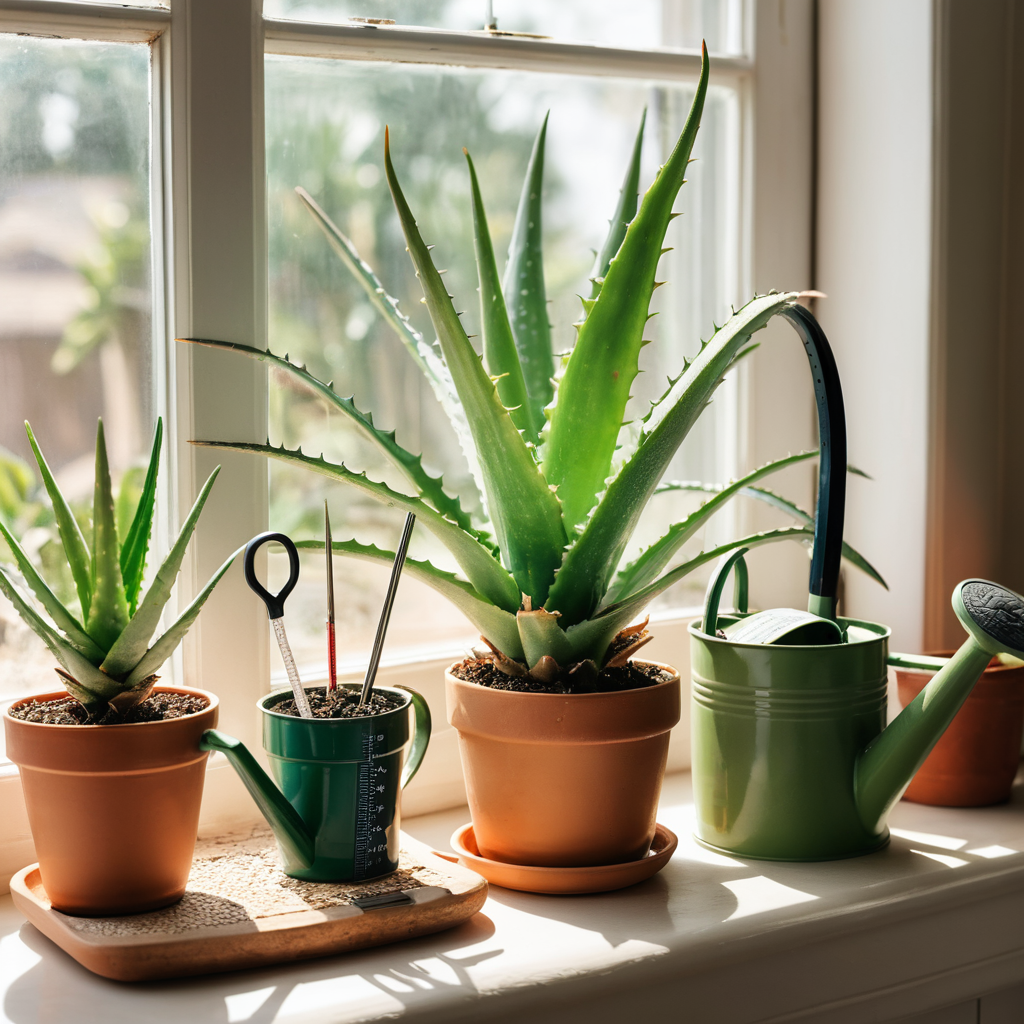
Regular Care Practices to Keep Aloe Plants Thriving
Consistency is key when it comes to aloe vera care. By sticking to a few essential practices, you can prevent common issues like overwatering, sunburn, and pests from causing harm to your aloe.
- Watering Routine:
Aloe vera is a succulent, so it doesn’t need a lot of water. Avoid overwatering, which can quickly lead to a dead aloe vera plant. Stick to a watering schedule where you let the soil dry out between waterings. During the growing season (spring and summer), you might water every 2-3 weeks, but during the winter, you can reduce watering to once a month or less.
- Tip: Always check the soil before watering. If the top 1-2 inches of soil are dry, it’s time to water. If it’s still moist, wait a few more days.
- Check for Pests Regularly:
Aloe vera is generally resistant to pests, but that doesn’t mean it’s completely immune. Regularly inspect your plant for signs of pests, like mealybugs, aphids, or spider mites, which can wreak havoc on your aloe’s health. If you find pests, act quickly to remove them before they can cause a dead aloe vera plant.
- Tip: Wipe your aloe’s leaves with a damp cloth to remove dust and keep pests from settling in.
- Fertilize Occasionally:
Aloe vera doesn’t need a lot of fertilizing, but a light dose of balanced, water-soluble fertilizer once or twice a year (usually in the spring) can help promote healthy growth, especially for a large aloe vera plant. Over-fertilizing can lead to weak, spindly growth, so keep it minimal.
Best Practices for Long-Term Aloe Health
Taking care of aloe vera is a marathon, not a sprint. To make sure your plant thrives for the long haul, here are some best practices to follow:
- Provide the Right Potting Conditions:
Always use well-draining soil for your aloe. Succulent soil or cactus mix is ideal, and ensure your pot has drainage holes to prevent water from pooling around the roots. Poor drainage is a surefire way to end up with a dead aloe vera plant.
- Tip: If you’re growing aloe vera seeds, make sure the potting mix is light and airy to help them establish strong roots.
- Repot When Necessary:
Over time, your aloe may outgrow its pot. If your aloe becomes root-bound (meaning the roots are tightly packed and circling the pot), it’s time to repot. Repotting gives your aloe more room to grow and helps prevent issues like root rot, which can lead to a dead aloe vera plant. Typically, you’ll need to repot your aloe every 1-2 years, depending on its growth rate.
- Monitor Temperature and Light Conditions:
Aloe vera loves sunlight, but it can get sunburned if it’s exposed to too much direct heat. Keep your aloe in a spot with bright, indirect sunlight, and be mindful of temperature extremes. Remember, aloe is a tropical plant, and temperatures below 50°F (10°C) or above 90°F (32°C) can cause it significant stress, possibly leading to a dead aloe vera plant.
- Prevent Cold Damage:
If you live in a region with cold winters, bring your aloe indoors when temperatures drop. Aloe vera can’t tolerate frost, and exposure to freezing temperatures will cause it to die. Keep your aloe in a spot with adequate light and warmth during the colder months to keep it healthy.
By following these best practices for long-term aloe health, you’ll avoid common problems that can lead to a dead aloe vera plant. A little care goes a long way when it comes to aloe vera—before you know it, you’ll be the proud owner of a thriving, large aloe vera plant that’s the envy of your friends. So, keep up with regular care, monitor your plant’s needs, and you’ll enjoy your aloe for years to come!
-photo-
FAQ
How can you bring a dead aloe vera plant back to life?
To revive a dead aloe vera plant, assess the cause of decline, such as overwatering or root rot, and trim off any dead or damaged leaves. Repot the plant in fresh, well-draining soil, and place it in a spot with bright, indirect sunlight. Water sparingly, letting the soil dry completely between waterings to avoid turning it into a dead aloe vera plant again.
What are the signs of a dead aloe vera plant?
A dead aloe vera plant typically shows wilted, mushy, or discolored leaves. You might also notice a foul smell from the roots if they’ve rotted, signaling a dead aloe vera plant. If the base of the plant is dry and shriveled, it’s likely beyond saving.
How to recognize an overwatered aloe vera?
Signs of an overwatered aloe vera include yellowing, soft, and mushy leaves. The roots may begin to rot, and you may notice a bad odor, which indicates a dead aloe vera plant. Overwatering can easily lead to a dead aloe vera if not corrected in time.
Can an aloe vera plant recover and grow again?
Yes, an aloe vera plant can recover if the damage isn’t too severe. Proper care—such as correcting watering practices, removing damaged parts, and providing the right light—can help your aloe vera plant regrow. However, if the roots are severely damaged, it may result in a dead aloe vera plant that can’t recover.
How can you tell if your aloe vera has gone bad?
Aloe vera has gone bad if it has mushy, blackened, or discolored leaves, often a sign of root rot, which can lead to a dead aloe vera plant. If the leaves are slimy or the plant no longer grows, it’s an indication of a health problem. These are signs that the aloe vera plant has likely gone bad.
Does aloe vera require full sun exposure?
Aloe vera does not need full sun exposure, but it thrives in bright, indirect light. Too much direct sunlight can lead to sunburn, especially in a large aloe vera plant, causing damage that could turn it into a dead aloe vera plant. Keep it in a well-lit area with filtered sunlight for optimal health.
Conclusion: Keep Your Aloe Vera Thriving!
Congratulations! You’re now armed with the knowledge to prevent your aloe vera from becoming a dead aloe vera plant. Whether you’re learning how to revive a struggling aloe or simply improving its care, you now know the key to keeping your plant healthy, happy, and thriving. With a little attention to watering, sunlight, and temperature, your aloe vera will grow strong, and maybe even into a large aloe vera plant that will impress everyone who sees it. So go ahead, take these tips, and give your aloe the love it deserves—here’s to many more years of healthy, vibrant growth!
Check out our latest article for more insights, and follow us on Facebook for updates! and connect with us on Instagram, Pinterest, and YouTube for more inspiration!

